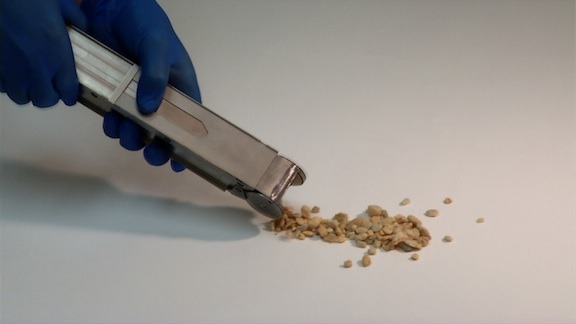NASA Tests Metal Ballista, Space Harpoon For Comet Nucleus Mission
This week the coolest team of space explorers on the planet at NASA have announced their next raging action and adventure television episode called "Space Harpoons!" – or that's what you might think if you'd not read too deeply into their press release which details not only "The Comet Nucleus Sample Return Mission," but both the fantastically powerful metal ballista and space harpoon they're currently testing out for it. Scientists at the Goddard Space Flight Center in Greenbelt, Md. are currently in early stages of testing a harpoon of epic proportions, able to collect samples of materials from the surface layers of a comet. What they're currently testing out is how hard their six foot tall crossbow will have to fire a harpoon with its 1/2 inch thick bow string to blast through enough layers of rock on the surface of the space bodies it intends to study.
For those of you interested in how intense this ballista would be able to be here on Earth, first note that they're firing the harpoons downward in their tests, but if they fired it upwards, it'd skewer more than its fair share of low-flying birds, up to a mile straight up. This bow has an electric winch that pulls its bow string back with a force of up to 1,000 pounds, able to fire projectiles to velocities up to 100 feet per second. Have a peek at the demonstration and explanation video courtesy of NASA below, and mind the 3D:
Studying samples of comets will allow us to discover information about the origins of our solar system. Donald Wegel of NASA Goddard, lead engineer on the project at hand, notes the following about the testing process:
"We had to bolt it to the floor, because the recoil made the whole testbed jump after every shot. We're not sure what we'll encounter on the comet – the surface could be soft and fluffy, mostly made up of dust, or it could be ice mixed with pebbles, or even solid rock. Most likely, there will be areas with different compositions, so we need to design a harpoon that's capable of penetrating a reasonable range of materials. The immediate goal though, is to correlate how much energy is required to penetrate different depths in different materials. What harpoon tip geometries penetrate specific materials best? How does the harpoon mass and cross section affect penetration? The ballista allows us to safely collect this data and use it to size the cannon that will be used on the actual mission." – Wegel
Isn't it all just so very exciting? Next we'll be launching probes into the Ultimate Evil just like they do on The Fifth Element, finding out that all of our readings are way off, and that we need to collect the five elements to stop the end of Humanity! Or we'll just find out some awesome information about rocks – either way, we win!


Credit: NASA/Rob Andreoli for the ballista testbed photo and the photo of the prototype harpoon tip and collection chamber.
[via NASA]
